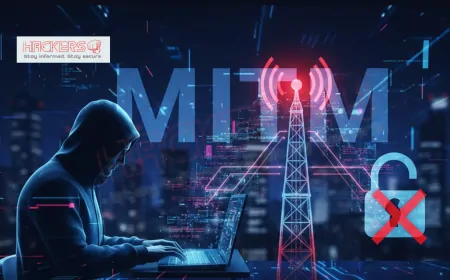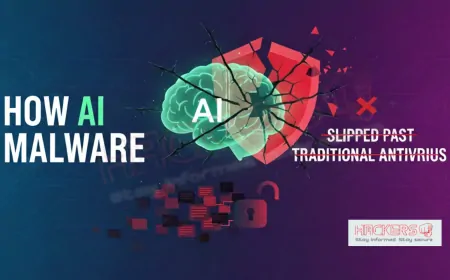How Can AI Prevent the Next Big Cyber Attack?
Imagine waking up to news of a massive data breach that exposes millions of personal records, crippling businesses and shaking public trust. In our digital world, cyber attacks are not just threats: they are realities that happen every day. But what if technology could stay one step ahead? Artificial intelligence, or AI, is emerging as a powerful ally in the fight against these digital dangers. This blog post explores how AI can help prevent the next big cyber attack, breaking down complex ideas into simple terms so anyone can grasp them. We'll look at real examples, challenges, and future possibilities, all while keeping things straightforward and practical.

Table of Contents
- Understanding Cyber Attacks
- The Role of AI in Cybersecurity
- How AI Detects and Prevents Threats
- Real-World Examples of AI in Action
- Challenges and Limitations of AI in Cybersecurity
- Future Trends in AI for Cybersecurity
- Conclusion
- Frequently Asked Questions
Understanding Cyber Attacks
Before we dive into how AI can help, it's important to know what we're up against. Cyber attacks are deliberate attempts by bad actors to damage, disrupt, or gain unauthorized access to computer systems, networks, or data. These can range from simple tricks to steal passwords to sophisticated operations that target entire organizations or governments.
Common types include phishing, where attackers send fake emails to trick people into revealing sensitive information; ransomware, which locks up data until a ransom is paid; and denial-of-service attacks, which overwhelm websites to make them unavailable. In 2025, these threats are evolving faster than ever, often powered by AI on the attacker's side to make them more effective and harder to spot.
Statistics show the scale of the problem. For instance, cyber attacks cost businesses billions each year, with average data breaches hitting millions in damages. Small companies are especially vulnerable because they might lack robust defenses. But here's the good news: AI can flip the script by using smart algorithms to identify and stop these threats before they cause harm.
Think of cyber attacks like burglars trying to break into a house. Traditional security is like locks and alarms, but AI is like a smart camera system that learns normal behavior and alerts you to anything unusual, even if it's a new kind of break-in attempt.
The Role of AI in Cybersecurity
AI refers to computer systems that can perform tasks that usually require human intelligence, such as learning from experience or recognizing patterns. In cybersecurity, AI acts as a tireless guardian, analyzing vast amounts of data at speeds no human could match.
Unlike traditional security tools that rely on known signatures of threats, like a list of bad viruses, AI uses machine learning. This is a subset of AI where systems improve over time by learning from data. For example, it can spot anomalies in network traffic that might signal an attack.
AI's role extends to automation. It can handle routine tasks, freeing up human experts for more complex issues. This means quicker responses to threats, reducing the window of opportunity for attackers.
To illustrate the differences, here's a table comparing traditional cybersecurity methods to AI-enhanced ones:
| Aspect | Traditional Methods | AI-Enhanced Methods |
|---|---|---|
| Threat Detection | Relies on known signatures and rules | Uses machine learning to detect unknown threats through patterns |
| Response Time | Manual analysis can take hours or days | Automated responses in seconds |
| Scalability | Limited by human resources | Handles massive data volumes effortlessly |
| Adaptability | Requires updates for new threats | Learns and adapts in real-time |
This table shows how AI builds on traditional approaches to create stronger defenses. By integrating AI, organizations can stay ahead in an ever-changing threat landscape.
How AI Detects and Prevents Threats
AI's strength lies in its ability to process and analyze data quickly. One key way it prevents attacks is through anomaly detection. This involves monitoring network behavior and flagging anything that deviates from the norm. For example, if a user suddenly downloads large amounts of data at odd hours, AI can alert security teams.
Another method is threat intelligence. AI gathers information from various sources, like global databases of known attacks, and uses it to predict potential risks. It can scan emails for phishing attempts by analyzing language patterns that seem suspicious.
Behavioral analytics is another powerful tool. AI learns the typical actions of users and devices, then spots unusual behavior that might indicate a compromise. This is especially useful against insider threats or advanced persistent threats, where attackers lurk undetected for long periods.
AI also powers automated response systems. Once a threat is detected, it can isolate affected systems, block malicious IP addresses, or even patch vulnerabilities automatically. This rapid action minimizes damage.
In phishing prevention, AI examines emails for subtle clues, like mismatched sender domains or urgent language designed to create panic. It can also simulate attacks to train employees, improving overall awareness.
For ransomware, AI can detect encryption patterns early and stop the process before files are locked. By learning from past incidents, it gets better at recognizing these threats over time.
Real-World Examples of AI in Action
Let's look at some practical cases where AI has made a difference. Google's Cloud Security AI Workbench uses AI to analyze security data and provide insights, helping organizations detect threats faster. In one instance, it identified unusual activity in a client's network, preventing a potential breach.
OpenAI's Aardvark is another example. This AI tool acts as a security researcher, finding and fixing software vulnerabilities before attackers exploit them. It's like having an extra set of eyes on code, catching bugs that humans might miss.
Companies like CrowdStrike use AI in their endpoint protection platforms. Their systems have stopped ransomware attacks by detecting malicious behavior in real-time. In 2025 reports, AI helped thwart attacks that used generative tools to create convincing phishing campaigns.
Microsoft's Digital Defense Report highlights how AI closes detection gaps. For instance, it protects users from AI-generated deepfakes used in social engineering attacks. By analyzing video and audio for inconsistencies, AI verifies authenticity.
These examples show AI isn't just theory: it's actively saving organizations from costly attacks. Small businesses can benefit too, with affordable AI tools available through cloud services.
Challenges and Limitations of AI in Cybersecurity
While AI offers many benefits, it's not without issues. One major challenge is data quality. AI needs good data to learn from; if the input is biased or incomplete, it can lead to false positives or missed threats.
Adversarial attacks are another concern. Attackers can trick AI systems by feeding them misleading data, causing them to make wrong decisions. This is like poisoning the well from which AI drinks.
Privacy is a big topic. AI often processes sensitive information, raising questions about how data is handled and protected. Organizations must ensure compliance with laws like GDPR.
There's also the risk of over-reliance. If teams depend too much on AI, they might neglect human oversight, which is crucial for interpreting complex situations.
Implementation costs can be high, especially for smaller entities. Training staff and integrating AI with existing systems takes time and resources.
Finally, AI itself can be weaponized by attackers. They use it to create more sophisticated malware or automate attacks, creating an arms race in cybersecurity.
Addressing these challenges requires a balanced approach: combining AI with human expertise and ongoing ethical considerations.
Future Trends in AI for Cybersecurity
Looking ahead, AI in cybersecurity is set to evolve rapidly. One trend is the rise of autonomous systems that not only detect but also respond to threats without human intervention. This could include self-healing networks that fix vulnerabilities on their own.
Privacy-preserving AI is gaining traction. Techniques like federated learning allow models to train on data without sharing it, protecting user information.
Quantum-resistant security is another area. As quantum computing advances, AI will help develop encryption that withstands these powerful machines.
AI agents are expected to boost threat levels, but also defenses. Organizations will use AI for proactive hunting, seeking out hidden threats before they activate.
Integration with generative AI will enhance simulations for training and testing defenses. This means better preparation for real-world scenarios.
Budget constraints might push more adoption of AI, as it offers cost-effective solutions in tight economic times. Overall, the future looks promising, with AI becoming a standard tool in every cybersecurity toolkit.
Conclusion
In summary, AI holds great promise in preventing the next big cyber attack by detecting threats early, automating responses, and adapting to new challenges. From anomaly detection to real-world applications like Google's tools, AI is transforming how we protect our digital lives. However, it's important to address limitations such as data privacy and adversarial risks to maximize its benefits. As we move forward, combining AI with human insight will create stronger, more resilient defenses. By embracing these technologies thoughtfully, we can build a safer online world for everyone.
What is AI in cybersecurity?
AI in cybersecurity involves using computer systems that learn from data to identify and stop digital threats, making protection smarter and faster than traditional methods.
How does AI detect cyber threats?
AI analyzes patterns in data to spot unusual behavior, such as odd network traffic, and flags potential attacks before they cause damage.
Can AI prevent phishing attacks?
Yes, AI examines emails for suspicious elements like fake links or urgent language, helping to block phishing attempts effectively.
What are the benefits of AI in cybersecurity?
AI offers quick threat detection, automation of responses, and the ability to handle large data volumes, improving overall security efficiency.
Are there risks with using AI for security?
Yes, risks include biased data leading to errors, privacy concerns, and attackers tricking AI systems with false information.
How is AI used in threat intelligence?
AI collects and processes data from various sources to predict and identify emerging threats, giving organizations an early warning.
Can small businesses use AI for cybersecurity?
Absolutely, many cloud-based AI tools are affordable and easy to implement, helping small businesses protect themselves without big budgets.
What is machine learning in cybersecurity?
Machine learning is a type of AI that improves over time by learning from past data, used to detect new and evolving threats.
How does AI handle ransomware?
AI detects unusual file encryption patterns and can stop the process early, preventing data from being locked by attackers.
Is AI replacing human cybersecurity experts?
No, AI supports experts by handling routine tasks, allowing humans to focus on complex problems and strategic decisions.
What are adversarial attacks on AI?
These are attempts by hackers to fool AI systems with manipulated data, causing them to make incorrect security decisions.
How can AI improve employee training?
AI simulates realistic attack scenarios to train staff, helping them recognize and respond to threats in a safe environment.
What role does AI play in behavioral analytics?
AI monitors user and device actions to establish normal patterns, then alerts on deviations that might indicate a security breach.
Are there ethical concerns with AI in cybersecurity?
Yes, concerns include data privacy, potential biases in AI decisions, and ensuring transparent use of technology.
How is generative AI affecting cybersecurity?
Generative AI creates realistic fake content for attacks, but it also helps defenders simulate and prepare for threats.
What future trends involve AI and quantum computing?
AI will help develop new encryption methods resistant to quantum attacks, securing data against advanced computing power.
Can AI automate security responses?
Yes, AI can isolate threats, block access, or apply patches automatically, reducing response times significantly.
How does AI address data privacy?
Techniques like federated learning allow AI to train without sharing raw data, protecting sensitive information.
What challenges do organizations face adopting AI?
Challenges include high costs, lack of skilled staff, and integrating AI with existing systems smoothly.
Why is AI important for the next big cyber attack?
AI's speed and adaptability make it essential for staying ahead of sophisticated, evolving threats in our connected world.
What's Your Reaction?










































































